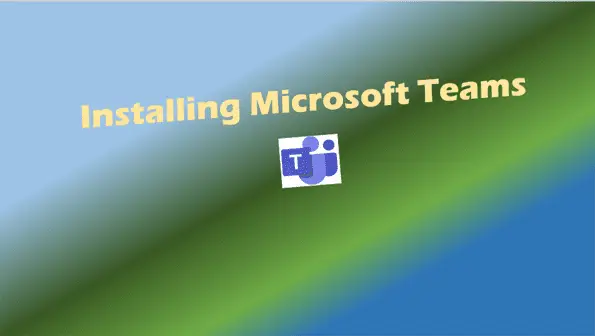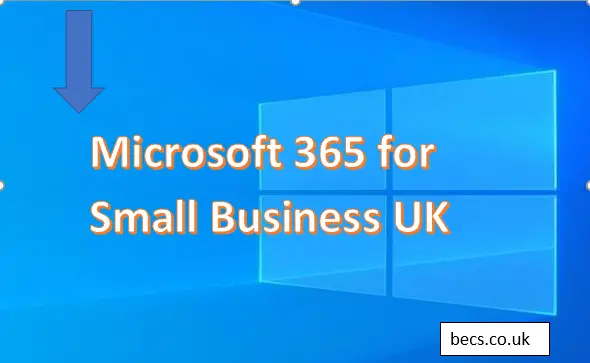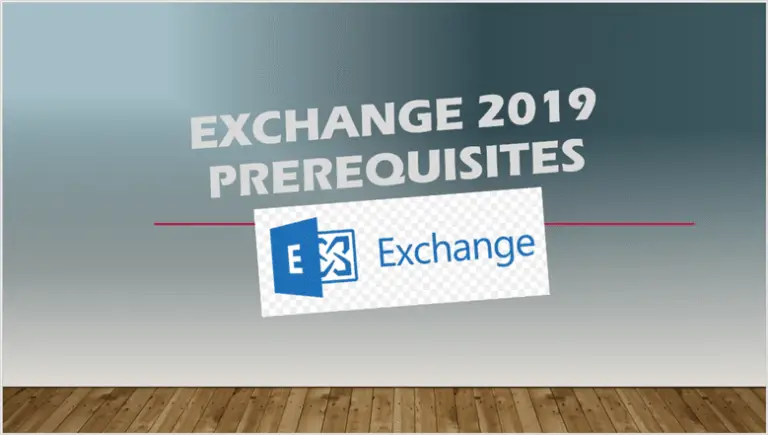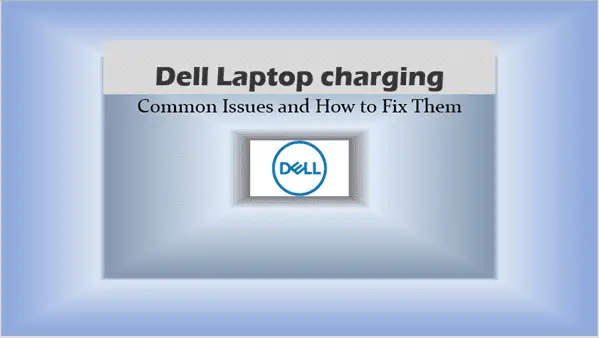Installing Microsoft Teams: The Ultimate Guide for IT Users
Installing Microsoft Teams made easy! Dive into our expert guide for IT users, covering Windows, Mac, Linux, and mobile installations.
Introduction – Installing Microsoft Teams
In today’s fast-paced digital workplace, effective communication and collaboration tools are essential for success. Microsoft Teams has emerged as a powerhouse platform, offering seamless integration of chat, video conferencing, file sharing, and more. For IT users, understanding how to install Microsoft Teams across various devices and platforms is crucial. This comprehensive guide will walk you through the process of installing Microsoft Teams on laptops, PCs, Macs, and mobile devices, troubleshooting common issues, and optimizing your Teams experience.
Why Install Microsoft Teams?
Before diving into the installation process, let’s briefly explore why installing Microsoft Teams is beneficial for IT users:
- Centralized Communication: Teams provides a single platform for chats, meetings, calls, and file sharing.
- Integration with Office 365: Seamless integration with other Microsoft tools enhances productivity.
- Cross-Platform Compatibility: Access Teams from various devices and operating systems.
- Enhanced Security: Built-in security features protect your organization’s data.
- Customization Options: Tailor Teams to your organization’s specific needs with apps and integrations.
Now, let’s explore how to install Microsoft Teams on different platforms.
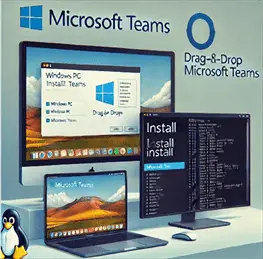
Installing Microsoft Teams on Windows
Installing Microsoft Teams on Windows 10 and 11
For Windows users, installing Microsoft Teams is a straightforward process:
- Visit the official Microsoft Teams download page.
- Click on the “Download for Desktop” button.
- Once the installer is downloaded, run the
.exefile. - Follow the on-screen prompts to complete the installation.
Pro Tip: For IT administrators, consider using the Microsoft Teams MSI installer for mass deployment across your organization.
Installing Microsoft Teams Using Windows Store
Alternatively, you can install Microsoft Teams from the Microsoft Store:
- Open the Microsoft Store app on your Windows device.
- Search for “Microsoft Teams”.
- Click “Get” or “Install” to download and install the app.
Troubleshooting Windows Installation
If you encounter issues during installation, try these steps:
- Ensure your system meets the minimum requirements for Microsoft Teams.
- Run Windows Update to ensure your system is up-to-date.
- Temporarily disable antivirus software during installation.
- Clear temporary files using the Disk Cleanup utility.
If you encounter specific error codes, refer to our Troubleshooting Installation Issues section below.
Installing Microsoft Teams on Mac
For Mac users, the installation process is similar to Windows:
- Visit the Microsoft Teams download page.
- Click on “Download for Desktop” and select the Mac version.
- Once downloaded, open the
.pkgfile. - Follow the installation wizard to complete the process.
Installing Microsoft Teams Using the Mac App Store
You can also install Teams from the Mac App Store:
- Open the App Store on your Mac.
- Search for “Microsoft Teams”.
- Click “Get” or “Install” to download and install the app.
Troubleshooting Mac Installation
If you face issues installing Teams on your Mac:
- Ensure your macOS version is compatible with the latest Teams version.
- Check for any macOS updates and install them.
- Clear cache and temporary files from your Mac.
- If using the
.pkginstaller, try downloading the app from the Mac App Store instead.
Installing Microsoft Teams on Linux
Microsoft Teams supports various Linux distributions, including Ubuntu and Fedora. Here’s how to install Teams on Linux:
For Ubuntu and Debian-based Distributions:
- Download the
.debpackage from the Microsoft Teams download page. - Open a terminal window.
- Navigate to the directory containing the downloaded file.
- Run the following command:
sudo dpkg -i teams_<version>_amd64.deb- If you encounter any dependency issues, run:
sudo apt-get install -fFor Fedora and RPM-based Distributions:
- Download the
.rpmpackage from the Microsoft Teams download page. - Open a terminal window.
- Navigate to the directory containing the downloaded file.
- Run the following command:
sudo yum install teams_<version>_x86_64.rpmTroubleshooting Linux Installation
If you face issues during Linux installation:
- Ensure your Linux distribution is supported by Microsoft Teams.
- Check for any system updates and install them.
- Verify that you have the necessary permissions to install software.
- If using the graphical package manager, try the command-line method instead.
Microsoft Teams Mobile Installation
Installing Microsoft Teams on iPhone and iPad
- Open the App Store on your iOS device.
- Search for “Microsoft Teams”.
- Tap “Get” or “Install” to download and install the app.
- Once installed, open the app and sign in with your Microsoft account.
Installing Microsoft Teams on Android Devices
- Open the Google Play Store on your Android device.
- Search for “Microsoft Teams”.
- Tap “Install” to download and install the app.
- Once installed, open the app and sign in with your Microsoft account.
Note: Some organizations may require you to install Microsoft Teams through their company portal or a specific mobile device management (MDM) solution.
Microsoft Teams Web App
For users who prefer not to install the desktop app or are using devices where installation is not possible, Microsoft Teams offers a web app version:
- Open your preferred web browser.
- Go to https://teams.microsoft.com/.
- Sign in with your Microsoft account.
- You can now use Teams directly from your browser.
Advantages of the Web App:
- No installation required
- Accessible from any device with a modern web browser
- Always up-to-date with the latest features
Limitations:
- Some features may not be available or may have reduced functionality
- Performance may be slightly slower compared to the desktop app
Microsoft Teams Offline Installer
For organizations with limited internet connectivity or those who need to deploy Teams across multiple machines, Microsoft provides an offline installer:
- Download the Microsoft Teams offline installer from the official Microsoft download center.
- Choose the appropriate version (32-bit or 64-bit) for your system.
- Once downloaded, run the
.exefile on the target machine. - Follow the installation prompts to complete the process.
Benefits of using the offline installer:
- Install Teams without an active internet connection
- Useful for mass deployment in enterprise environments
- Ensures all users have the same version of Teams installed
Troubleshooting Installation Issues
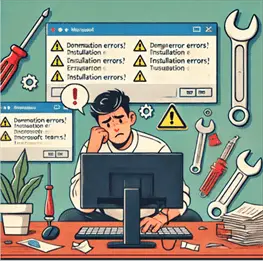
Even with careful planning, you may encounter issues when installing Microsoft Teams. Here are some common problems and their solutions:
Error Code 0x80070643
This error typically occurs due to corrupted Windows system files or issues with the Windows Installer service.
Solution:
- Run the Windows System File Checker:
sfc /scannow- Restart the Windows Installer service:
- Press
Win + R, typeservices.msc, and press Enter. - Find “Windows Installer” in the list.
- Right-click and select “Restart”.
Error Code 0x80070005
This error indicates a permissions issue, often related to antivirus software or User Account Control (UAC) settings.
Solution:
- Temporarily disable your antivirus software.
- Run the installer as an administrator.
- Check your UAC settings and ensure they’re not set to the highest level.
Error 1603
This is a generic Windows Installer error that can have multiple causes.
Solution:
- Clear the Windows Installer cache:
- Press
Win + R, typemsiexec /unregister, and press Enter. - Wait a few seconds, then type
msiexec /regserver, and press Enter.
- Ensure you have enough disk space for the installation.
- Check for and install any pending Windows updates.
Teams Installation Hangs or Freezes
If the Teams installer seems to freeze or hang during installation:
Solution:
- End the Teams processes in Task Manager.
- Clear the Teams cache folder:
- Press
Win + R, type%appdata%\Microsoft\Teams, and press Enter. - Delete the contents of this folder.
- Restart your computer and try the installation again.
If you continue to experience issues, consider using the Microsoft Teams troubleshooting tool for a more in-depth diagnosis.
Installing Microsoft Teams for All Users
For IT administrators who need to deploy Microsoft Teams across an organization, installing Teams for all users is crucial. Here’s how to do it:
- Download the Teams MSI package from the Microsoft Teams admin center.
- Open Command Prompt as an administrator.
- Run the following command:
msiexec /i <path_to_msi> ALLUSERS=1Replace <path_to_msi> with the actual path to your downloaded MSI file.
This method ensures that Teams is installed in the Program Files directory and is available for all user profiles on the machine.
Note: When installing for all users, make sure you have the necessary administrative privileges and consider any organizational policies regarding software installation.
Microsoft Teams Add-ins and Modules
Enhance your Microsoft Teams experience with add-ins and modules:
Installing Microsoft Teams Add-in for Outlook
- Open Outlook and go to the Home tab.
- Click on “Get Add-ins” or “Store”.
- Search for “Microsoft Teams Meeting”.
- Click “Add” to install the add-in.
This add-in allows you to schedule Teams meetings directly from Outlook.
Installing Microsoft Teams PowerShell Module
For advanced management and automation:
- Open PowerShell as an administrator.
- Run the following command:
Install-Module -Name MicrosoftTeams- When prompted, type ‘Y’ and press Enter to install the module.
This module provides cmdlets for managing Teams settings, users, and policies through PowerShell.
Updating and Maintaining Microsoft Teams
To ensure you’re always using the latest version of Microsoft Teams with the most up-to-date features and security patches:
- Automatic Updates: By default, Teams updates itself automatically. Ensure this setting is enabled:
- Click on your profile picture in Teams
- Go to Settings > About > Check for updates
- Manual Updates: If you prefer manual control:
- Download the latest version from the official Microsoft Teams download page
- Run the installer to update your existing installation
- Group Policy: For organizations, use Group Policy to manage Teams updates across your network.
- Regular Maintenance:
- Clear the Teams cache periodically to resolve performance issues
- Keep your operating system and other Microsoft Office applications up-to-date
- Review and update Teams policies and settings in the Microsoft 365 admin center
By following these practices, you’ll ensure a smooth and secure Teams experience for all users in your organization.
Key Takeaways
- Microsoft Teams can be installed on Windows, Mac, Linux, and mobile devices.
- The web app version of Teams is available for users who can’t or prefer not to install the desktop app.
- An offline installer is available for environments with limited internet connectivity.
- Common installation issues can often be resolved by clearing caches, updating Windows, or adjusting permissions.
- Installing Teams for all users requires administrative privileges and use of the MSI installer.
- Regular updates and maintenance are crucial for optimal performance and security.
FAQ
- Q: Can I use Microsoft Teams for free?
A: Yes, Microsoft offers a free version of Teams with limited features. However, for full functionality, a Microsoft 365 subscription is recommended. - Q: Do I need to install Teams to join a meeting?
A: No, you can join a Teams meeting via the web app without installing the desktop client. However, some features may be limited. - Q: How do I install the new version of Teams?
A: Teams typically updates automatically. If you want to manually install the latest version, download it from the official Microsoft Teams website and run the installer. - Q: Can I install Microsoft Teams on multiple devices?
A: Yes, you can install and use Teams on multiple devices with the same account. - Q: How do I install Teams for all users on a shared computer?
A: Use the MSI installer with the ALLUSERS=1 parameter when running the installation command as an administrator. - Q: Is Microsoft Teams compatible with older versions of Windows?
A: Teams is officially supported on Windows 10 and later. For older versions, consider using the web app or upgrading your operating system. - Q: Can I use Microsoft Teams offline?
A: While most features require an internet connection, you can access some content offline if you’ve previously opened it in Teams. - Q: How do I resolve the 0x80070643 error when installing Teams?
A: This error often relates to Windows system files. Try running the System File Checker (sfc /scannow) and restarting the Windows Installer service. - Q: Can I install Microsoft Teams without admin rights?
A: The standard Teams installer doesn’t require admin rights for personal installation. However, for organizational deployments, admin rights are typically needed. - Q: How do I install Microsoft Teams on Ubuntu Linux?
A: Download the .deb package from the Microsoft Teams website and use thesudo dpkg -icommand to install it via terminal.
By following this comprehensive guide, IT users should be well-equipped to install, troubleshoot, and maintain Microsoft Teams across various platforms and scenarios. Remember to stay updated with the latest versions and best practices to ensure a smooth collaboration experience for your organization.
Related Posts to Installing Microsoft Teams:
- How to Join a Meeting on Microsoft Teams (in 3 Easy Steps)
- Uninstall Microsoft Teams: Master the Uninstallation Process Today
- Microsoft Teams Web app
More Information:
